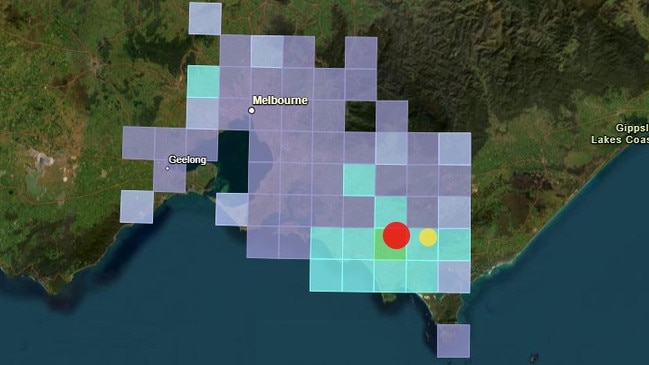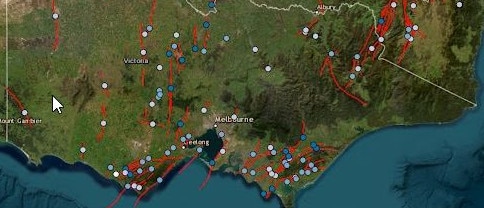Earthquakes rattle Foster, Euroa, Leongatha in the same week
A 2.6 magnitude earthquake shook Euroa on Friday night, just hours after a 4.3 magnitude earthquake rattled Leongatha on Friday morning.

Victoria
Don't miss out on the headlines from Victoria. Followed categories will be added to My News.
An earthquake has shaken Victoria for the third time in four days.
The magnitude 2.6 earthquake was reported in Euroa at 7:44pm on Friday night.
One Longwood local said the tremor was so big they ran outside to check if a tree had fallen on their house.
Another resident said they “thought it was an explosion”.
It is the third earthquake to rock the state this week, following a quake in Foster on Tuesday and another in Leongatha in the early hours of Friday morning.
Geoscience Australia said the 4.3 magnitude quake struck near Leongatha in Victoria, about 130 kilometres south east of Melbourne, but was felt as far north as Sunbury and Wilson’s Promontory in the south.
The quake hit at 12:49am Friday morning with 4920 locals reporting they felt the tremors, including people in South Australia and Tasmania.
Local residents took to social media reporting the tremor had woken them up.
“I’m in Meeniyan and can confirm that was a good one! Scared the sh** out of me and my dog,” one wrote online.
“Same here up the road in Leongatha, go to the toilet one minute and boom, the entire house is shaking,” another wrote.
There's been a 4.3 mag earthquake near Leongatha in Victoria. It's been felt from as far north as Sunbury in Melbourne to Wilson's Promontory National Park in the south. So far 2,500 people have lodged felt reports. If you felt it, you can log one here: https://t.co/dwO66YRdHCpic.twitter.com/p3odEy9Llc
— Geoscience Australia (@GeoscienceAus) February 8, 2024
Adam Pascale from the Seismology Research Centre, who lives in Melbourne’s northern suburbs, was also woken up from the earthquake.
“There may be some aftershocks continuing, but we will have to see,” he said on X, formerly known as Twitter.
It comes after another small earthquake rocked another small town in Gippsland earlier this week.
Foster was hit by the 3.3 magnitude earthquake about 12.15pm on Tuesday, with a recorded depth of 1km.
Both shakes were a far cry from the earthquake that shook Melbourne in September 2021.
It measured 5.9, caused several old buildings to collapse and created tremors as far away as Sydney, Dubbo and Launceston.
Head of Seismology at The University of Melbourne Dr Januka Attanayake has previously told the Herald Sun that while it seemed like there was more earthquake activity in Victoria now than in the past, that was not the case.
Science and technology had just become better at detecting the “many very tiny earthquakes” that occurred regularly, he said.

“We have a seismic record of about 200 years and we don’t see an increase in activity … overall, if you take a time average seismic rate, we are not experiencing more events,” Dr Attanayake said.
“However, because we have put more and more seismometers on the ground, we are recording more and more smaller events. For example, if you look at Gippsland region prior to 2017, we recorded about 150 to 200 events a year but since 2017, the University of Melbourne has developed a pretty sophisticated high seismic network in that area and now we are recording about 450 events a year.”
A 4.6-magnitude earthquake woke some Victorians in July last year, hitting 127km east of Melbourne, near Rawson.
The state was also hit by a record breaking 5.8 magnitude earthquake in September 2021, that caused damage in parts of Melbourne and elsewhere.
Dr Attanayake said scores of fault lines lay below Victoria, with most concentrated in the south west and east of the state, and Bendigo also a hotspot.
And any more fractures in the earth’s crusts — or faults — existed in Victoria than scientists had managed to map.
We’re still in the process of mapping all the fault lines, it’s an ongoing process,” he said.
“These fractures in the Earth’s crust are progressive, and they exist almost everywhere. It’s just that some of these faults are discovered when an earthquake has occurred, so it’s very difficult to say exactly where these fault lines are but we know that they exist beneath our feet.”



